Distress Read online
Page 3
I went back and intercut some microscope footage of the tailored algae and bacteria inhabiting his blood and digestive tract, then a shot of the tire dump map, which he’d displayed for me on his notepad. I played with an animation I’d been preparing, a schematic of his personal carbon, oxygen, and energy cycles, but I wasn’t yet sure where it belonged.
I’d prompted him: “So you’re immune to famine and mass extinctions – but what about viruses? What about biological warfare, or some accidental plague?” I cut my words out; they were redundant, and I preferred to intrude as little as possible. The change of topic was a bit of a non sequitur as things stood, though, so I synthesized a shot of Landers saying, “As well as using symbionts,” computed to merge seamlessly with his actual words, “I’m gradually replacing those cell lines in my body which have the greatest potential for viral infection. Viruses are made of DNA or RNA; they share the same basic chemistry as every other organism on the planet. That’s why they can hijack human cells in order to reproduce. But DNA and RNA can be manufactured with totally novel chemistry – with non-standard base pairs to take the place of the normal ones. A new alphabet for the genetic code: instead of guanine with cytosine, adenine with thymine – instead of G with C, A with T – you can have X with Y, W with Z.”
I changed his words after “thymine” to: “ – you can use four alternative molecules which don’t occur in nature at all.” The sense was the same, and it made the point more clearly. But when I replayed the scene, it didn’t ring true, so I reverted to the original.
Every journalist paraphrased vis subjects; if I’d flatly refused to employ the technique, I wouldn’t be working. The trick was to do it honestly – which was about as difficult as imposing the same criterion on the editing process as a whole.
I cut in some stock molecular graphics of ordinary DNA, showing every atom in the paired bases which bridged the strands of the helix, and I color-coded and labeled one example of each base. Landers had refused to specify exactly which non-standard bases he was using, but I’d found plenty of possibilities in the literature. I had the graphics software substitute four plausible new bases for the old ones in the helix, and repeated the slow zoom-in and rotation of the first shot with this hypothetical stretch of Landers-DNA. Then I cut back to his talking head.
“A simple base-for-base substitution in the DNA isn’t enough, of course. Cells need some brand new enzymes to synthesize the new bases – and most of the proteins which interact with DNA and RNA need to be adapted to the change, so the genes for those proteins need to be translated , not just rewritten in the new alphabet.” I improvised some graphics illustrating the point, stealing an example of a certain nuclear binding protein from one of the journal articles I’d read – but redrawing the molecules in a different style, to avoid copyright violation. “We haven’t yet been able to deal with every single human gene which needs translation – but we’ve made some specific cell lines which work fine with mini-chromosomes containing only the genes they need.
“Sixty per cent of the stem cells in my bone marrow and thymus have been replaced with versions using neo-DNA. Stem cells give rise to blood cells – including the cells of the immune system. I had to switch my immune system back into an immature state, temporarily, to make the transition work smoothly – I had to go through some of the childhood clonal deletion phases all over again, to weed out anything which might have caused an autoimmune response – but basically, I’m now able to shoot up pure HIV, and laugh about it.”
“But there’s a perfectly good vaccine—”
“Of course.” I cut my own words out, and made Landers say: “Of course, there’s a vaccine for that.” Then: “And I have symbionts providing a second, independent immune system, anyway. But who knows what’s coming along next? I’ll be prepared, whatever it is. Not by anticipating the specifics – which no one could ever do – but by making sure that no vulnerable cell in my body still speaks the same biochemical language as any virus on Earth.”
“And in the long term? It’s taken a lot of expensive infrastructure to provide you with all of these safeguards. What if that technology doesn’t survive long enough for your children and grandchildren?” This was all redundant, so I ditched it.
“In the long term, of course, I’m aiming to modify the stem cells which produce my sperm. My wife Carol has already begun a program of ova collection. And once we’ve translated the entire human genome, and replaced all twenty-three chromosomes in sperm and ova … everything we’ve done will be heritable. Any child of ours will use pure neo-DNA – and all the symbionts will pass from mother to child in the womb.
“We’ll translate the genomes of the symbionts as well – into a third genetic alphabet – to protect them from viruses, and to eliminate any risk of accidental gene exchange. They’ll be our crops and our herds, our birthright, our inalienable dominion, living in our blood forever.
“And our children will be a new species of life. More than a new species – a whole new kingdom.”
The soccer players in the park cheered; someone had scored a goal. I left it in.
Landers beamed suddenly, radiantly, as if he was contemplating this strange arcadia for the very first time.
“That’s what I’m creating. A new kingdom .”
#
I sat at the console eighteen hours a day, and forced myself to live as if the world had shrunk, not to the workroom itself, but to the times and places captured in the footage. Gina left me to it; she’d survived the editing of Gender Scrutiny Overload , so she already knew exactly what to expect.
She said blithely, “I’ll just pretend that you’re out of town. And that the lump in the bed is a large hot water bottle.”
My pharm programmed a small skin patch on my shoulder to release carefully timed and calibrated doses of melatonin, or a melatonin blocker – adding to, or subtracting from, the usual biochemical signal produced by my pineal gland, reshaping the normal sine wave of alertness into a plateau followed by a deep, deep trough. I woke every morning from five hours of enriched REM sleep, as wide-eyed and energetic as a hyperactive child, my head spinning with a thousand disintegrating dreams (most of them elaborate remixes of the previous day’s editing). I wouldn’t so much as yawn until eleven forty-five – but fifteen minutes later, I’d go out like a light. Melatonin was a natural circadian hormone, far safer and more precise in its effects than crude stimulants like caffeine or amphetamines. (I’d tried caffeine a few times; it made me believe I was focused and energetic, but it turned my judgment to shit. Widespread use of caffeine explained a lot about the twentieth century.) I knew that when I went off the melatonin, I’d suffer a short period of insomnia and daytime drowsiness – an overshoot of the brain’s attempts to counteract the imposed rhythm. But the side-effects of the alternatives were worse.
Carol Landers had declined to be interviewed, which was a shame – it would have been quite a coup to have chatted with the next Mitochondrial Eve. Landers had refused to comment on whether or not she was currently using the symbionts; perhaps she was waiting to see if he’d continue to flourish, or whether he’d suffer a population explosion of some mutant bacterial strain, and go into toxic shock.
I’d been permitted to speak to a few of Landers’ senior employees – including the two geneticists who were doing most of the R&D. They were coy when it came to discussing anything beyond the technicalities, but their general attitude seemed to be that any freely chosen treatment which helped safeguard an individual’s health – and which posed no threat to the public at large – was ethically unimpeachable. They had a point, at least from the biohazard angle; working with neo-DNA meant there was no risk of accidental recombination. Even if they’d flushed all their failed experiments straight into the nearest river, no natural bacterium could have taken up the genes and made use of them.
Implementing Landers’ vision of the perfect survivalist family was going to take more than R&D, though. Making heritable changes in any human g
ene was currently illegal in the US (and most other places) – apart from a list of a few dozen “authorized repairs” for eliminating diseases like muscular dystrophy and cystic fibrosis. Legislation could always be revoked, of course – although Landers’ own top biotech attorney insisted that changing the base pairs – and even translating a few genes to accommodate that change – wouldn’t actually violate the anti-eugenics spirit of the existing law. It wouldn’t alter the external characteristics of the children (height, build, pigmentation). It wouldn’t influence their IQ, or personality. When I’d raised the question of their presumed sterility (barring incest), he’d taken the interesting position that it would hardly be Ned Landers’ fault if other people’s children were sterile with respect to his own. There were no infertile people, after all – only infertile couples.
An expert in the field at Columbia University said all of this was bullshit: substituting whole chromosomes, whatever the phenotypic effects, would simply be illegal. Another expert, at the University of Washington, was less certain. If I’d had the time, I could probably have collected a hundred sound-bites of eminent jurists expressing every conceivable shade of opinion on the subject.
I’d spoken to a number of Landers’ critics, including Jane Summers, a freelance biotech consultant based in San Francisco, and a prominent member of Molecular Biologists for Social Responsibility. Six months earlier (writing in the semi-public MBSR netzine, which my knowledge miner always scrutinized diligently), she’d claimed to have evidence that several thousand wealthy people, in the US and elsewhere, were having their DNA translated, cell type by cell type. Landers, she’d said, was merely the only one to have gone public – to act as a kind of decoy: a lone eccentric, defusing the issue, making it seem like one man’s ridiculous (yet almost Quixotic) fantasy. If the research had been exposed in the media with no specific person associated with it, paranoia would have reigned: there would have been no limit to the possible membership of the nameless elite who planned to divorce themselves from the biosphere. But since it was all out in the open, and all down to harmless Ned Landers, there was really nothing to fear.
The theory made a certain amount of sense – but Summers’ evidence hadn’t been forthcoming. She’d reluctantly put me in touch with an “industry source” who’d supposedly been involved in gene translation work for an entirely different employer – but the “source” had denied everything. Pressed for other leads, Summers had become evasive. Either she’d never had anything substantial – or she’d made a deal with another journalist to keep the competition away. It was frustrating, but in the end I hadn’t had the time or resources to pursue the story independently. If there really was a cabal of genetic separatists, I’d just have to read the exclusive in the Washington Post like everyone else.
I closed with a medley of other commentators – bioethicists, geneticists, sociologists – mostly dismissing the whole affair. “Mr. Landers has the right to live his own life, and raise his own children, any way he sees fit. We don’t persecute the Amish for their inbreeding, their strange technology, their desire for independence. Why persecute him, for essentially the same ‘crimes’?”
The final cut of the story was eighteen minutes long. In the broadcast version, there’d only be room for twelve. I pared away mercilessly, summarizing and simplifying – taking care to do a professional job, but not too worried by the loss of detail. Most real-time broadcasts on SeeNet served no purpose but to focus publicity, and to guarantee reviews in some of the more conservative media. Junk DNA was scheduled for 11 p.m. on a Wednesday; the vast majority of the audience would log on to the full, interactive version at their convenience. As well as a slightly longer linear backbone, the interactive would be peppered with optional detours to other sources: all the technical journal articles I’d read for my own research (and all the articles they in turn cited); other media coverage of Landers (and of Jane Summers’ conspiracy theory); the relevant US and international statutes – and even trails leading into the quagmire of potentially relevant case law.
On the evening of the fifth day of editing – right on schedule, reason enough for minor jubilation – I tidied up all the loose ends, and ran through the segment one last time. I tried to clear away all my memories of filming, and all my preconceptions, and watch the story like a SeeNet viewer who’d seen nothing at all on the subject before (save a few misleading promotions for the documentary itself).
Landers came across surprisingly sympathetically. I’d thought I’d been harsher. I’d thought I’d at least given him every opportunity to damn himself with his earnest account of his surreal ambitions. Instead, he seemed far more good-humored than po-faced; he almost appeared to be sharing all the jokes. Living off tire dumps? Shooting up HIV? I watched, amazed. I couldn’t decide if there really was a faint undercurrent of deliberate irony, a hint of self-deprecation in his manner which I’d somehow missed before – or whether the subject matter simply made it impossible for a sane viewer to interpret his words any other way.
What if Summers was right? What if Landers was a decoy, a distraction, a consummate performing clown? What if thousands of the planet’s wealthiest people really were planning to grant themselves, and their offspring, perfect genetic isolation, and absolute viral immunity?
Would it matter? The rich had always cut themselves off from the rabble, one way or another. Pollution levels would continue to decline, whether or not algal symbionts rendered fresh air obsolete. And anyone who chose to follow in Landers’ footsteps was no great loss to the human gene pool.
There was only one small question which remained unanswered, and I tried not to give it too much thought.
Absolute viral immunity … against what?
Chapter 4
Delphic Biosystems had been too generous by far. Not only had they arranged for me to interview ten times as many of their Public Relations staff as I could ever have made time for, they’d showered me with ROMs packed with seductive micrographs and dazzling animation. Software flow-charts for the HealthGuard implant were rendered as airbrushed fantasies of impossible chromed machines, jet-black conveyor belts moving incandescent silver nuggets of “data” from subprocess to subprocess. Molecular schematics of interacting proteins were shrouded with delicately beautiful – and utterly gratuitous – electron-density maps, veils of pink and blue aurorae melting and merging, transforming the humblest chemical wedding into a microcosmic fantasia. I could have set it all to Wagner – or Blake – and flogged it to members of Mystical Renaissance, to play on a loop whenever they wanted to go slack-jawed with numinous incomprehension.
I slogged my way through the whole morass, though – and it finally paid off. Buried amongst all the technoporn and science-as-psychedelia were a few shots worth salvaging.
The HealthGuard implant employed the latest programmable assay chip: an array of elaborate proteins bound to silicon, in many respects like a pharm’s synthesizer, but designed to count molecules, not make them. The previous generation of chips had used a multitude of highly specific antibodies, Y-shaped proteins planted in the semiconductor in a chequerboard pattern, like adjoining fields of a hundred different crops. When a molecule of cholesterol, or insulin, or whatever, happened to strike exactly the right field and collide with a matching antibody, it bound to it long enough for the tiny change in capacitance to be detected, and logged in a microprocessor. Over time, this record of serendipitous collisions yielded the amount of each substance in the blood.
The new sensors used a protein which was more like a Venus flytrap with brains than an antibody’s passive, single-purpose template. “Assayin” in its receptive state was a long, bell-shaped molecule, a tube opening out into a broad funnel. This conformation was metastable; the charge distribution on the molecule rendered it exquisitely sensitive, spring-loaded. Anything large enough colliding with the inner surface of the funnel caused a lightning-fast wave of deformation, engulfing and shrink-wrapping the intruder. The microprocessor, noting the sprung tr
ap, could then probe the captive molecule by searching for a shape of the assayin which imprisoned it even more snugly. There were no more wasted, mismatched collisions – no more insulin molecules striking cholesterol antibodies, yielding no information at all. Assayin always knew what had hit it.
It was a technical advance worth communicating, worth explaining, worth demystifying . Whatever the social implications of the HealthGuard implant, they could no more be presented in a vacuum, divorced from the technology which made the device possible, than vice versa . Once people ceased to understand how the machines around them actually functioned, the world they inhabited began to dissolve into an incomprehensible dreamscape. Technology moved beyond control, beyond discussion, evoking only worship or loathing, dependence or alienation. Arthur C. Clarke had suggested that any sufficiently advanced technology would be indistinguishable from magic – referring to a possible encounter with an alien civilization – but if a science journalist had one responsibility above all else, it was to keep Clarke’s Law from applying to human technology in human eyes.

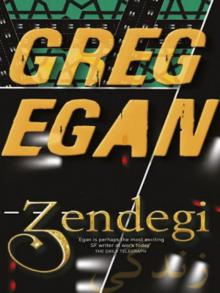 Zendegi
Zendegi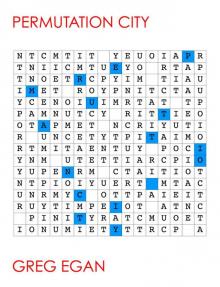 Permutation City
Permutation City The Eternal Flame
The Eternal Flame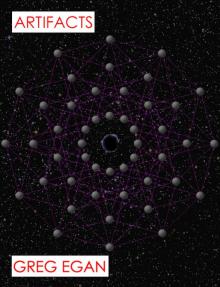 Artifacts
Artifacts Wang's Carpets
Wang's Carpets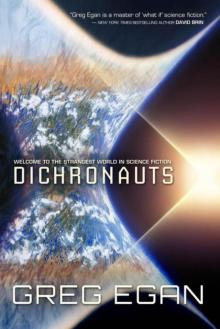 Dichronauts
Dichronauts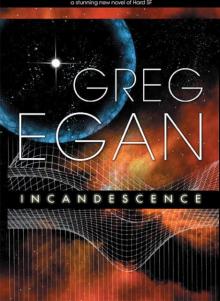 Incandescence
Incandescence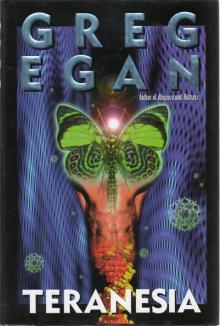 Teranesia
Teranesia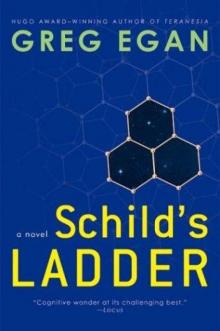 Schild's Ladder
Schild's Ladder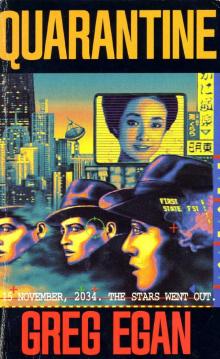 Quarantine
Quarantine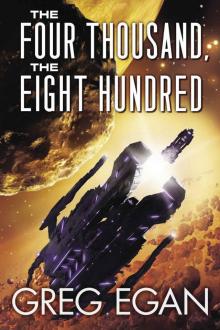 The Four Thousand, the Eight Hundred
The Four Thousand, the Eight Hundred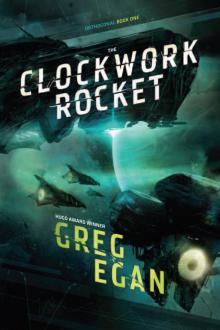 The Clockwork Rocket
The Clockwork Rocket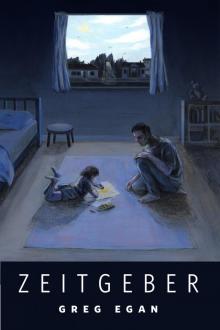 Zeitgeber
Zeitgeber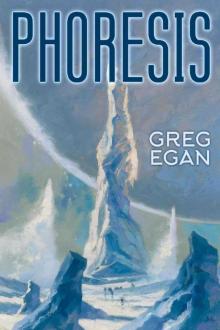 Phoresis
Phoresis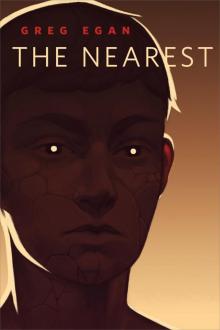 The Nearest
The Nearest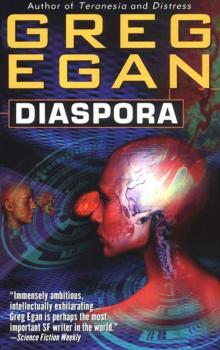 Diaspora
Diaspora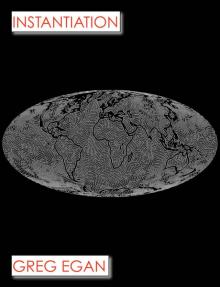 Instantiation
Instantiation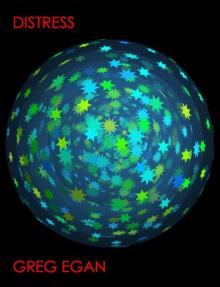 Distress
Distress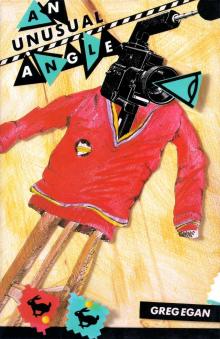 An Unusual Angle
An Unusual Angle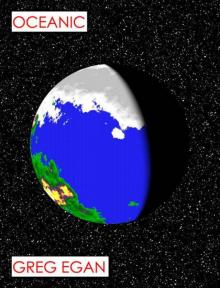 Oceanic
Oceanic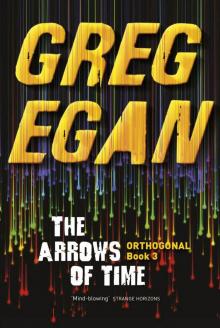 The Arrows of Time
The Arrows of Time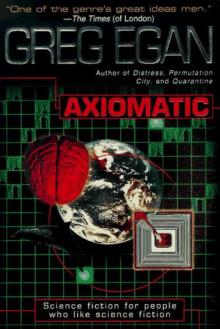 Axiomatic
Axiomatic![Anthology 2. Luminous [1998, 2010] Read online](http://i1.bookreadfree.com/i/03/18/anthology_2_luminous_1998_2010_preview.jpg) Anthology 2. Luminous [1998, 2010]
Anthology 2. Luminous [1998, 2010]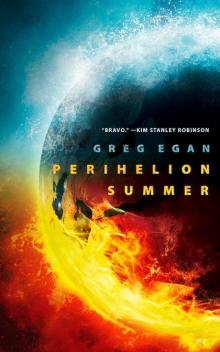 Perihelion Summer
Perihelion Summer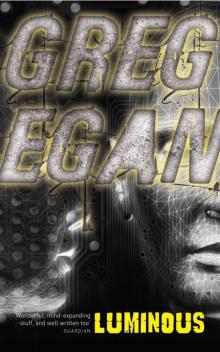 Luminous
Luminous